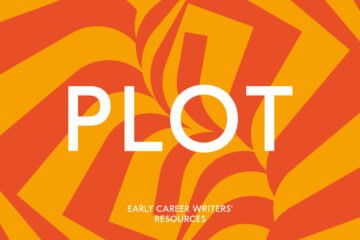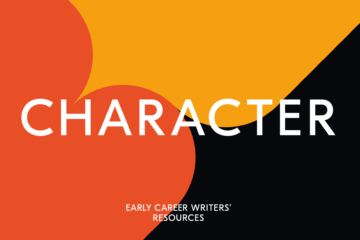This is the story of how serialised writing has helped me write two books, one of which won an award and has been read by over 27,000 people, while having a busy day job and not annoying my family.
When I grew up, I was going to be a writer. As a kid, I was always writing short stories, poems, screenplays and anything else that came to mind.
Then I got distracted, went to university, studied film and English and stumbled down a visual effects rabbit hole for 14 years. I got married, had a kid. These were all great things in their own ways, but I never quite found time to realise that childhood writing dream.
Photo by rawpixel.com on Unsplash
Talking of children, my son was born in 2012. Seeing a newborn child made me realise not only that I was going to die someday but that if I wanted to achieve particular things I needed to get on with it. I’ve heard others talk of having a similar reaction to life-changing events.
I remembered: I was supposed to be a writer, but I’d got to 32 years old and it hadn’t happened.
It’s not that I hadn’t been writing over the years. I was always dabbling with a short story, or a screenplay, before getting distracted by a new shiny object. There was always a new project on the horizon to pull me away from the one I should have been finishing.
If any of that sounds familiar, then let’s got straight on to what I actually did about it.
The serialised model
I write and publish a new chapter of my novel every week. I started doing this in 2015 and it led to the creation of A Day of Faces – my first complete novel! I’m now in the middle of my second novel, The Mechanical Crown.
The critical thing here is that I publish a new chapter every week. This immediately deconstructs the intimidating, monolithic prospect of writing a novel into the much more manageable micro-challenge of writing a single chunk.
By publishing as I go, I get immediate feedback on the story. Reader response acts as a barometer of whether the story is working and provides direct motivation to keep going. Instead of writing in isolation, with the book hidden from the world, instead my first draft is entirely public. It’s a statement of intent and holds me to account, providing the incentive to keep writing.
Our lives are busy
You’ll frequently hear the advice that you need to write every day. This is absolutely a noble goal but can be especially challenging when you’re also balancing family, work and other passions. The risk is that if you attempt to write every day and fail that it’ll be demotivating and you’ll give up, or burn out after a short period.
The weekly serial format means that you have to write at least once a week. It produces consistent output, without being such a drain that it impacts on other areas of your life. If you can write more then that’s wonderful, of course – but one chapter per week is entirely doable and will start to build a regular writing habit.
Critically, this enables you to make definite progress on your novel without annoying friends and family.
Target 1,200 words
I’ve found 1,200 words per week to be the magic number for online serialisation. It’s an easy amount to write and it’s also a good balance for readers: long enough for a chapter to have some real substance, while being short enough to be bite-sized. If you’re a new writer who is still building an audience, you want to make it easy for people to read your stuff – if you make your weekly chapters too long they’ll have to compete with all the other demands on a reader’s time, such as other books, Netflix and the brain-suck of Facebook et al.
1,200 words is a target, though. If the story demands more or fewer words that’s fine.
Platforms
Being held to account only works if people start reading your work. It doesn’t have to be a lot of people – in the first eight-or-so months of writing A Day of Faces I only accumulated about 1000 reads, for example. Even a dozen people are enough to keep you going, and if your writing is good that audience will continue to grow every single week.
My primary venue is Wattpad, which can be thought of as YouTube for words. It’s a big, free, chapter-based publishing platform with a built-in readership that is easy to use and has a decent Kindle-style mobile app. It’s been a little under-developed for the last couple of years but is currently still a good option.
I’ve also dabbled with Inkitt, which delivers a nicely designed site with a responsive team but a rather obscure reviewing and community setup, and Tablo which appears to have had a recent re-design and is probably worth investigating.
You could, of course, simply publish on your own blog. If you’ve already got an audience then that’s definitely worth considering.
Piecing it together
As should be evident, this is not the fastest way to write a novel. If you’re writing 1,200 words per week, one chapter per week, then creating a 50,000 word short novel will take about 42 weeks. The crucial thing here though is that after 42 weeks you will definitely have a novel: no writer’s block, no distractions – just consistent creative output.
If you’re in the business of producing multiple novels in a year in order to make a living as a writer, this isn’t going to work. But if you’re starting out and finding it hard to even get the words onto paper, let alone complete anything, it’s a sure thing.
In my case, after 30 years of never quite writing a novel, I’ve now completed one and am steadily moving through the second and loving every moment. The first, A Day of Faces, won a Watty award and has had 141,000 reads. The second, The Mechanical Crown, is about half-complete and is sitting at 5,100 reads. The primary purpose of writing in this way was never to acquire an audience, but it’s a decidedly pleasant side effect.
Giving your stuff away
It can seem counter-intuitive to be giving all of your writing away for free, and it’s certainly not the right option for everyone. In my case, without taking this approach I would never have even finished that first novel.
Putting your work up for free doesn’t preclude you from any other options. You can still self-publish it as an ebook once it’s complete. You can still approach agents and publishers if you’re seeking a traditional route. Note that none of things are possible without having a complete book in the first place.
I’m currently in the process of having A Day of Faces professionally edited, before re-publishing it as an ebook and print book. In that regard, the Wattpad version was a public first draft. In other words, there are always options.
Want to know more?
If you’re tempted to give this a go, I go into more detail on all of this in my How To Write Serialised Fiction book, which you can grab for free over here.



0 Comments